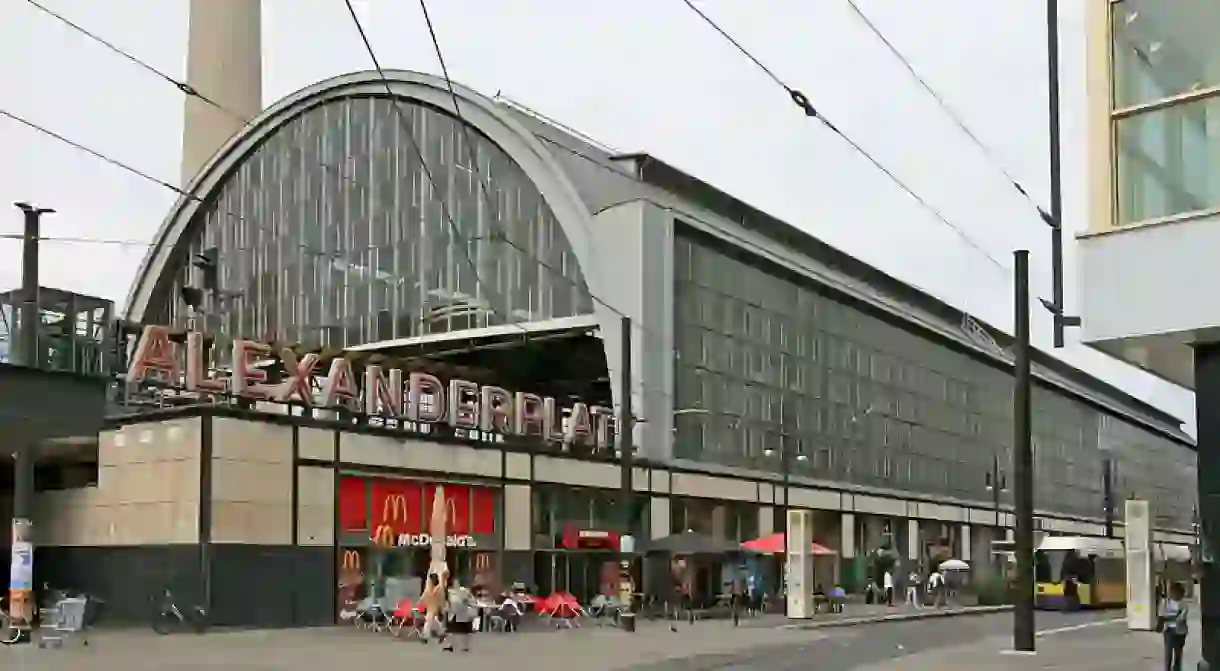10 Astonishing Historical Facts About Alexanderplatz

Alexanderplatz as we know it today has become incredibly popular for people of all ages for a number of reasons, and is a gathering point for Berlin natives as well for tourists. It offers a variety of attractions, including shopping, foods, and a well-connected center point for Berlin’s transportation system — however, the history of Alexanderplatz is not well known. Here we explore the historical secrets of this long-time Berlin icon.

The Beginning: 13th Century
Alexanderplatz has a history that goes back as far as the 13th century, when the double-town Cölln-Berlin existed. Alexanderplatz first gained historical importance with the construction of the original Chapel of Reconciliation around 1230, and towards the end of the 13th century, it became known as a traffic zone for those who wanted to enter Berlin through its Oderberger Tor.
The Rise of Business: 18th Century
Up until the 18th century, Alexanderplatz developed pretty slowly, but at the beginning of the 1700s, it became a cattle market where you could always find farmers and merchants. By the second half of the 18th century, it also served as a wool market.

Military: 18th-19th Century
While it continued to serve as a market, Alexanderplatz also ended up becoming a popular area for military parades and exercises. The Prussian troops (relating to the historic state, before Germany’s first unification) spent many hours and days marching through what we know today as Alexanderplatz.

Origins of Name: 19th Century
On October 25th 1805, the Russian Emperor Alexander I visited Berlin. Prussia King Frederick William III decided to name this part of Berlin in honor of the Russian Tzar — thus, the name Alexanderplatz would forever be identified with this area of Berlin, and it became one of the most important places with cultural and historical importance.

Modernization: 19th-20th Century
The late 19th century was extremely important for Alexanderplatz for two reasons. Its first train station was created 1882, which was the beginning of what would one day turn into a well linked transport system allowing Berliners to find accessible routes in any direction. The U-Bahn arrived in 1913, and has been a vital part of Berlin since then. In 1886, the Central Market Hall was constructed, and from 1904 to 1911, the Tietz department store became the first official business in the area.

Modernization Part Two: 20th Century
Going into the 1920s, along with Potsdamer Platz, Alexanderplatz turned into a hotspot for Berlin’s vivid, exciting nightlife. Bars and clubs found their way into the Alexanderplatz, attracting an ever bigger demographic. A new era had begun for the Alexanderplatz while it was still adjusting to the modern, industrialized world.

After WWII: 20th Century
After World War II, most of the buildings had were bombed in Berlin. Alexanderplatz had been completely destroyed with the exception of two buildings (the Berolina-Haus and Alexanderhaus). Following the separation of Germany, Alexanderplatz became the center of East Berlin. The redevelopment began in the 1960s, and the area was reconstructed into a pedestrian zone, while the buildings that would be built at Alexanderplatz had token on the DDR’s typical architecture —grey, dull structures which belonged to an architecture style called Plattenbau.

Monuments/Landmarks: 20th Century
Towards the end of the 60s, Alexanderplatz gained three new landmarks which would boost cultural and historical importance for the Alexanderplatz. In 1969, the Uraniaweltzeituhr (World clock) and the Fernsehturm were constructed and ready to be shown to the rest of the world. The Fernsehturm remains one of Germany’s most valued sights. The third monument is known as Brunnen der Völkerfreundschaft (Fountain of Internal Friendship), which was finished in 1970.

Demonstration of 1989: 20th Century
On the fourth of November 1989, one of the biggest demonstrations to ever take place in East Germany happened at Alexanderplatz. With up to a million protesters gathered all at once fighting for political reforms and individual freedom. Artists, actors, and important political figures came to express issues concerning the people of East Germany. This demonstration was not focused on ideas of a reunification or the removal of the wall — however, it did serve as an important step leading up to reunified Germany.

Redevelopment: 20th-21st Century
After Germany’s official reunification in 1990, Alexanderplatz began to grow even more. While it maintained its socialist architecture style, many buildings were renovated and improved. While the redevelopment phase is still at work at today, there are numerous projects planned to redesign certain buildings and build more skyscrapers.














